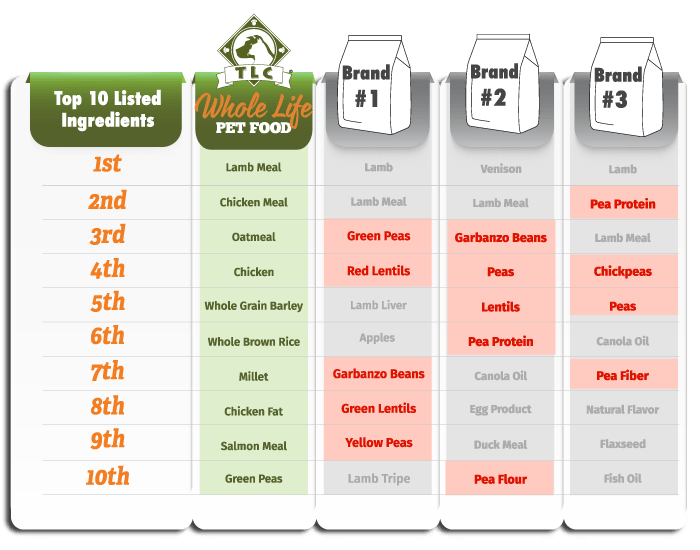Your cart is currently empty.
TLC Pet Food provides a Q and A on canine heart health and the recent FDA press release regarding grain-free diets for dogs and their potential risks.
TLC Pet Food provides a Q and A on canine heart health and the recent FDA press release regarding grain-free diets for dogs and their potential risks.
A recent press release from the FDA has indicated concerns that “…dogs that ate certain pet foods containing peas, lentils, other legumes or potatoes as their main ingredients…” [most often labeled ‘grain-free] are at higher risk of developing canine heart disease, known as dilated cardiomyopathy (DCM). This announcement has rattled the pet food industry and led to many concerned pet parents. Affects on canine heart health have many wondering about the nutritional value of the food they’ve chosen for their dogs.
We wanted to break down the FDA’s concerns and help answer any questions you may have. We’ve taken some of the questions we’ve received from customers and laid them out along with our responses. As a result, we hope this gives you the answers you need to make the right choices for your pet.
No. TLC formulas include ancient whole grains. The nutritional benefits these ingredients add to our formulas include high digestibility, a quality source of dietary fiber, magnesium, and carbohydrates.
TLC’s primary ingredients include high-quality meat-based protein sources. This includes farm-fresh Chicken, New Zealand Lamb, and Atlantic Salmon. As previously mentioned, most quality meat-based protein sources are easily digestible. Taurine can naturally turn into essential amino acids by your pup’s own body. TLC includes an adequate amount of meat-based protein, and there is no need to add taurine to our food artificially.
The FDA is investigating potential links between an unusual surge in DCM found in dogs whose primary diet consisted of pet food made with legumes and/or potatoes listed as primary ingredients. This is the case in many “grain-free” formulas. Grain-free formulas often replace grains with vegetable-based protein sources, like peas, lentils, and other legumes. This leads to either reducing the amount of higher quality meat-based protein sources, or an unnaturally high protein level (30% or higher), which can have health implications.
Meat, like chicken, lamb, and salmon in formulas, is considered higher quality protein sources for dogs than vegetable-based protein sources. Dogs can easily digest meat-based proteins and turn them into essential amino acids. This includes taurine, an amino acid only available in meat-based protein sources and necessary to support canine heart health. If you reduce the amount of quality meat-based protein sources in a formula, it can mean your pup won’t get the essential nutrients they need to thrive. The FDA is investigating the potential link between formulas relying on vegetable-based proteins and the sudden and unusual increase in cases of canine heart disease.

A misconception since the FDA’s announcement has been that legumes are unhealthy ingredients. This is untrue. It’s not the ingredients themselves, but the lack of quality meat-based protein sources believed to be causing the unusual surge in DCM cases. TLC includes legumes, not as a primary protein source but as sources of dietary fiber, vitamins, and minerals.
Thanks to the FDA and AAFCO, pet food labels are under heavy regulation. All pet food labels must list ingredients in order by weight. This means that ingredients listed first have higher inclusion rates. Reading the label will give you a pretty good sense of what ingredients are being relied upon for primary sources of nutrition. However, pet parents should be aware of “ingredient splitting.” Ingredient splitting is when a pet food company chooses to break up inferior ingredients. A formula relying on legumes for protein may attempt to push wanted meat-protein sources up the list. For instance, legumes, like peas, can be split into multiple named ingredients. For example, instead of listing “peas” as a single ingredient, a label may say “pea fiber,” “green peas,” and “yellow peas,” and “pea hulls.” Consequently, this can mislead pet parents. Be sure to look for this when considering your pet food.
We hope that this Q and A has helped relieve some worry many pup parents have about the recent FDA release. TLC Pet Food was not part of the FDA’s list and was not fed in any reported cases. We will continue to monitor the FDA’s investigations and share any future developments with our customers as they arise.
